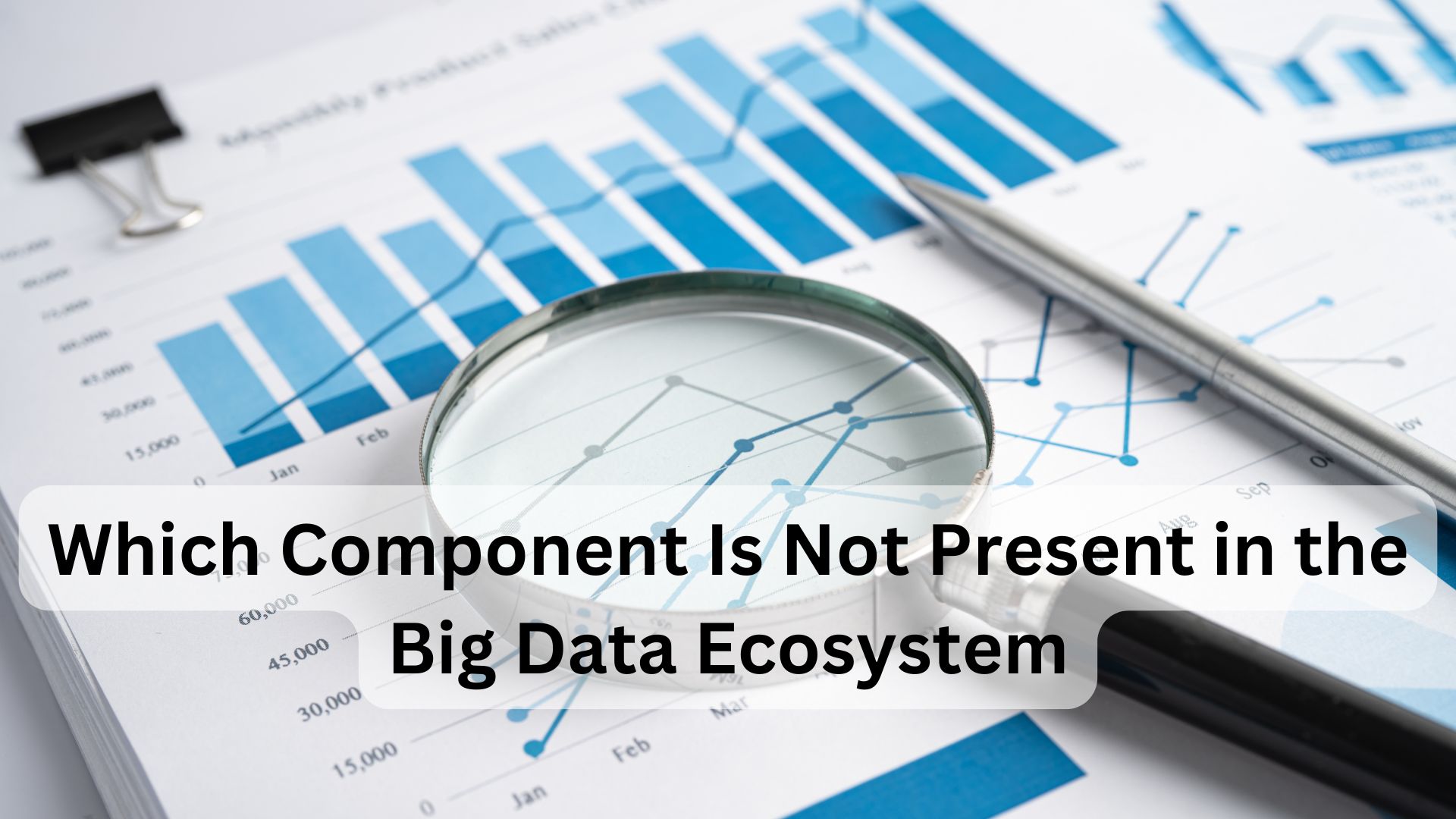
The big data ecosystem is a complex and dynamic structure composed of multiple components that work together to process, store, analyze, and visualize large datasets. While many components form the backbone of this ecosystem, it’s equally important to identify which ones are not inherently part of the big data ecosystem. This clarity helps businesses focus on the essential tools and frameworks while avoiding unnecessary distractions.
In this article, we explore the fundamental components of the big data ecosystem, highlight which components are missing, and discuss their implications for data processing.
Understanding the Big Data Ecosystem
The big data ecosystem is a vast network of tools, platforms, and technologies that facilitate the storage, processing, and analysis of massive datasets. These components can be categorized into five main areas:
- Data Sources: Where data originates, such as transactional systems, IoT devices, social media, and sensors.
- Data Storage: Tools like Hadoop Distributed File System (HDFS), Amazon S3, and Google Cloud Storage store vast amounts of structured and unstructured data.
- Data Processing: Technologies such as Apache Spark, Apache Flink, and MapReduce enable efficient data processing.
- Data Analysis: Platforms like Tableau, Power BI, and Apache Drill help derive actionable insights from the data.
- Data Management and Governance: Tools for ensuring data quality, security, and compliance, including Apache Atlas and Talend.
While these components form the core of the ecosystem, certain technologies or processes might seem related but are not directly part of the big data framework.
Which Component Is Not Present in the Big Data Ecosystem?
When discussing the big data ecosystem, some components are commonly misunderstood as part of it but are actually not integral to its architecture. Let’s explore these below:
1. Traditional Relational Databases
While big data deals with vast, unstructured, and semi-structured datasets, traditional relational database management systems (RDBMS) such as MySQL and PostgreSQL are not inherently designed for handling such large volumes. Instead, big data ecosystems rely on NoSQL databases like MongoDB or distributed systems like HBase.
2. Stand-alone Analytics Tools
Standalone tools like Excel are not a part of the big data ecosystem due to their limitations in handling scale and variety. Big data analytics requires tools capable of processing millions of records across distributed clusters, which Excel cannot manage effectively.
3. Non-Distributed Systems
Big data ecosystems prioritize scalability and distribution. Systems that lack distributed architecture, such as legacy software designed for single-server deployment, are not considered part of this ecosystem.
4. Non-Data-Centric Processes
Components not involved in the storage, analysis, or visualization of data—such as basic project management tools or general-purpose software—are outside the purview of the big data ecosystem.
5. Traditional Networking Systems
Networking hardware and protocols (e.g., routers or standard FTP) that handle data transfer but are not specifically tailored for big data workloads do not form part of the ecosystem.
Key Features of a True Big Data Ecosystem Component
For a technology or tool to be part of the big data ecosystem, it must:
- Handle Large Data Volumes: Be capable of storing and processing terabytes or even petabytes of data.
- Support Variety: Process structured, semi-structured, and unstructured data.
- Offer Scalability: Scale horizontally to accommodate growing data volumes.
- Enable Distributed Processing: Operate across multiple nodes in a cluster.
Components Integral to Big Data Ecosystems
Below are some of the critical components that are unquestionably part of the big data ecosystem:
1. Hadoop Ecosystem
Hadoop is a cornerstone of big data, comprising HDFS for storage, YARN for resource management, and MapReduce for processing.
2. NoSQL Databases
Tools like Cassandra and MongoDB enable storage of non-relational data formats, making them integral to the big data ecosystem.
3. Data Ingestion Tools
Apache Kafka, Flume, and Sqoop are used for ingesting large volumes of data into the ecosystem.
4. Data Processing Frameworks
Apache Spark and Apache Flink allow real-time and batch processing of data.
5. Data Visualization Tools
Tools like Tableau and Kibana help make sense of processed data through dashboards and charts.
Why Understanding Exclusions Matters
By knowing which components are not part of the big data ecosystem, businesses can:
- Avoid Misallocation of Resources: Focus on investing in tools that genuinely support big data operations.
- Enhance Efficiency: Build a streamlined system optimized for large-scale data analytics.
- Future-Proof Their Infrastructure: Adopt technologies designed for scalability and adaptability.
Conclusion
The big data ecosystem is a well-defined architecture that excludes technologies incapable of handling large, distributed datasets. By focusing on tools and frameworks built for scalability, variety, and velocity, businesses can unlock the full potential of their data.
If you are looking to master the tools and technologies within the big data ecosystem, consider enrolling in Data Analytics offline Course in Delhi, Noida, Ghaziabad, and all Cities in India. comprehensive program equips you with the skills to navigate and excel in the dynamic world of big data. Enroll now to take your career to the next level!





Leave a Reply